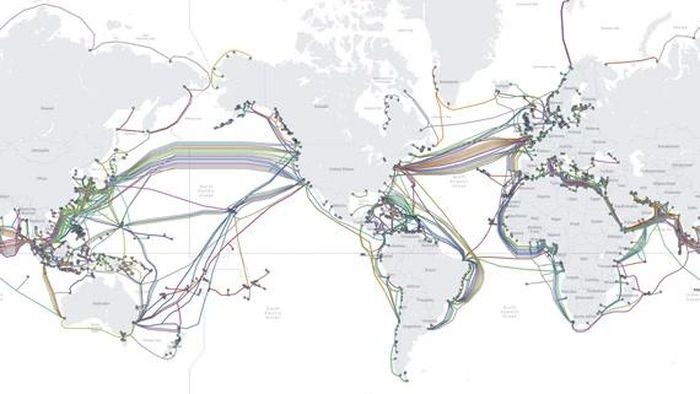The ocean floor is frequently shaken by earthquakes, resulting in tsunamis. Receiving early warnings can give people enough time to move to higher ground before a tsunami strikes.
The people of Vanuatu, an archipelago in the South Pacific, are likely no strangers to tsunamis and floods. Currently, there are only about 65 deep-sea buoys operating worldwide, designed to detect tsunamis; however, their sparse distribution sometimes fails to provide adequate coverage.

Sensors can be added to the signal repeaters of submarine cables to provide tsunami warnings. (Photo: MIT).
SMART is an initiative by the United Nations aimed at addressing this issue by equipping new commercial underwater submarine cables with simple sensors to measure pressure, acceleration, and temperature. These sensors can be integrated into signal repeaters of submarine cables, which are waterproof tubes filled with equipment used to amplify signals every 50 kilometers.
This allows scientists to collect information about the ocean floor on an unprecedented scale and transmit tsunami warning data much faster than currently possible.
Adding sensors to submarine cables is not a new idea; however, it requires some design changes, and persuading major telecommunications companies to integrate these sensors is not straightforward.
Last year, Subsea Data Systems, a startup funded by the U.S. National Science Foundation, developed a repeater that can integrate sensors. This technology is expected to be demonstrated when three test repeaters are deployed off the coast of Sicily.
Major telecommunications company Alcatel recently announced that SMART cable technology will be available by 2025. In the same year, Portugal plans to start implementing CAM, a €150 million SMART cable project to connect Lisbon with the Madeira and Azores islands. The European Union has allocated €100 million for digital connectivity infrastructure, including such cable projects.
If this technology is deployed in Vanuatu and New Caledonia, it will help the residents of these two islands mitigate damage caused by tsunamis. This technology will also provide high-speed connectivity, reducing the risk of communication loss, as seen during last year’s volcanic eruption in Tonga, which severed the country’s only telecommunications cable.
Laura Kong, director of the International Tsunami Information Center (a joint effort of UNESCO and the National Oceanic and Atmospheric Administration of the U.S.), stated that if communities receive tsunami warnings 5-10 minutes earlier, it could make a significant difference.


















































